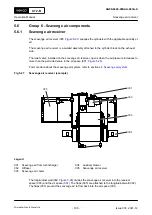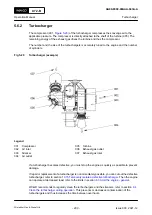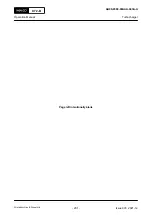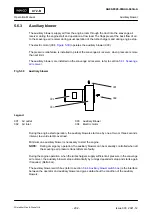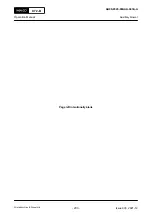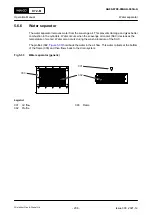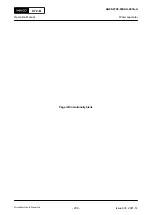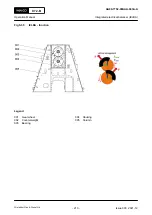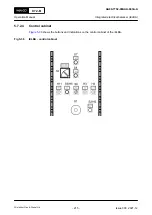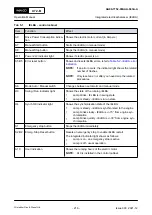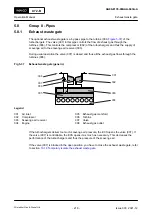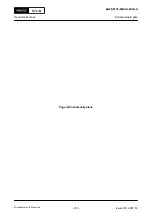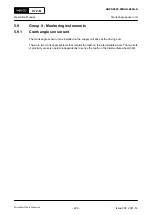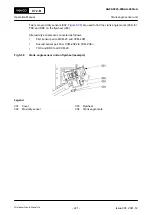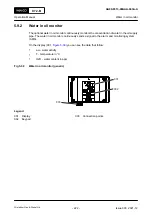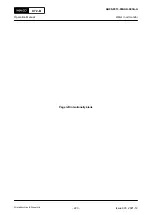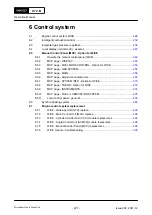
5.7.2
Integrated electrical balancer (iELBA)
The optional integrated ELectrical BAlancer (iELBA) decreases second order vertical mass
moments (M2v) of the engine, refer to
NOTE:
For the engine itself it is not necessary to install a balancer. But a balancer decreases
the exitation forces of the engine. A calculation of the mass moment M2v shows if a
balancer is necessary for a specified hull design.
Usually there are two iELBAs installed, one at the free end (FE) and one at the driving end (DE)
of the engine. For special designs it is possible to install only one balancer at the free end (FE) or
at the driving end (DE).
Fig 5-34
Effect of second order moments (M2v) of the engine
5.7.2.1
Function
An electric motor operates the two gear wheels (001,
(002) in opposite directions. The horizontal elements (F
horiz
) of the forces (F) are always canceled.
The vertical elements (F
vert
) are always added to a resulting vertical force. This resulting force
operates up and down with the same frequency as the counterweights (002) turn. The resulting
force is transmitted through the bearings (003) to the column (005) and thus to the engine.
The rotating speed (
ω
) of the counterweights (002) is always two times the engine rotating speed
and is in phase to the engine. Thus the second order vibrations in the hull are decreased.
Engine system oil lubricates the iELBA. The oil flows back to the crankcase.
NOTE:
Operate the iELBA only if system oil is available at correct pressure and flow rate.
A brake resistor for each balancer changes the rotating energy of the iELBA to heat in the
conditions that follow:
•
If the engine speed changes quickly.
•
If there is an emergency stop of the iELBA.
•
If there is an energy sink during the phase synchronisation of the iELBA.
X72-B
AA00-7752-00AAA-043A-A
Operation Manual
Integrated electrical balancer (iELBA)
Winterthur Gas & Diesel Ltd.
- 212 -
Issue 003 2021-12

